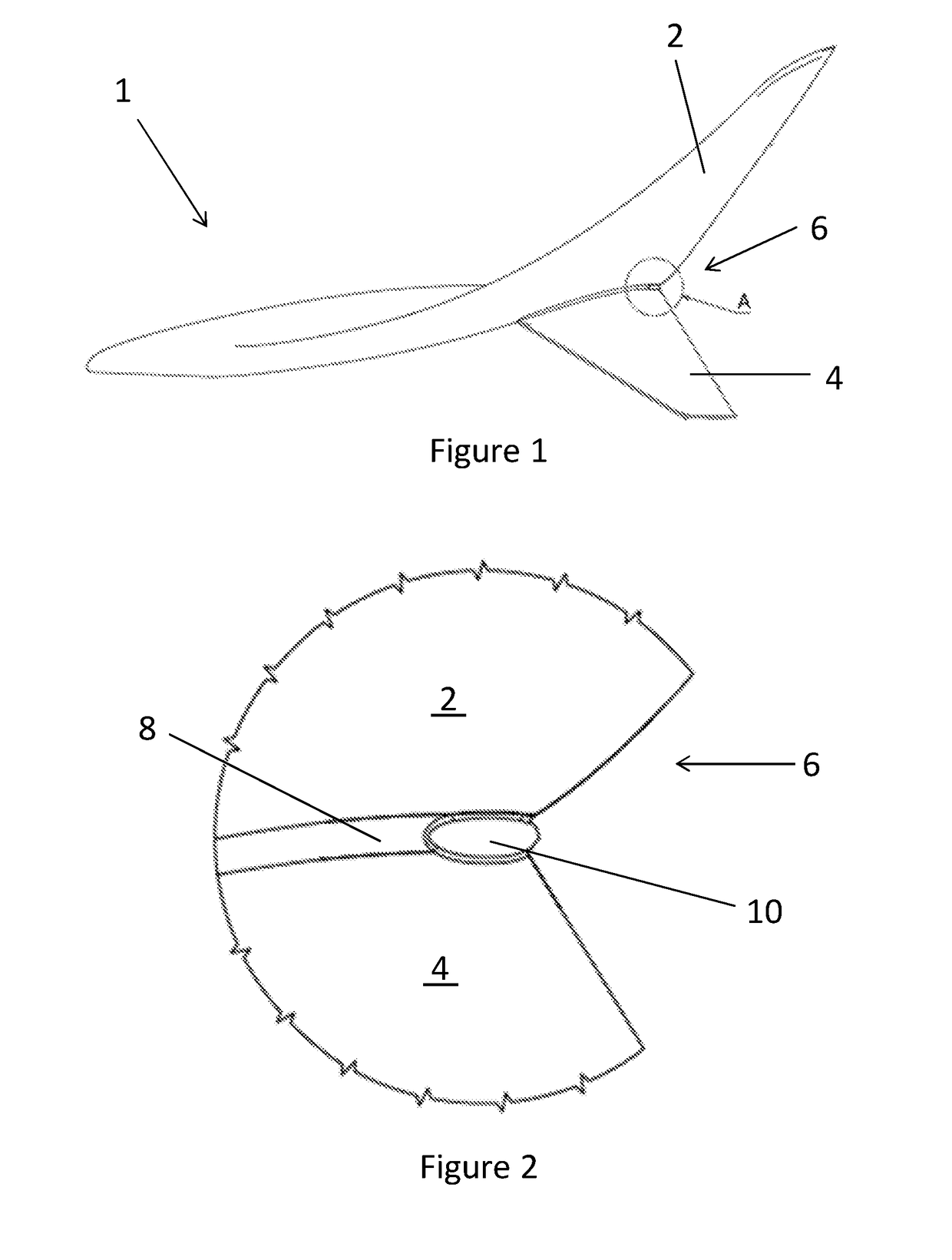Aircraft light
a technology for aircraft and lights, applied in aircraft control, aircraft components, influencers by generating vortices, etc., can solve problems such as drag generation, and achieve the effects of reducing drag, widening the illumination field, and reducing the proportion of light cones
- Summary
- Abstract
- Description
- Claims
- Application Information
AI Technical Summary
Benefits of technology
Problems solved by technology
Method used
Image
Examples
first embodiment
[0036]FIG. 3 shows a rear view of the wingtip device 1 of the As shown in FIG. 3 the light 10 is located on the mean camber line of the downwardly extending winglet 4, at the point which is closest to the mean camber line of the upwardly extending winglet. The angle between the upwardly extending winglet 2 and downwardly extending winglet 4 is around 130 degrees. The angle between the wing plane and the tip of the upwardly extending winglet 2 is around 120 degrees, and the angle between the wing plane and the downwardly extending winglet 4 is around 120 degrees.
[0037]As can be seen from FIGS. 1 to 3, wingtip devices in accordance with the present embodiment may experience less drag as locating the light 10 at the join 6 allows the majority of the body of the light 10 to sit within the join thereby shielding it from the airflow around the wingtip device when the aircraft is in flight. Positioning the obstruction light 10 at the trailing edge of the wingtip device 1 may also allow fo...
second embodiment
[0040]Whilst the present invention has been described and illustrated with reference to particular embodiments, it will be appreciated by those of ordinary skill in the art that the invention lends itself to many different variations not specifically illustrated herein. By way of example only, certain possible variations will now be described. The second embodiment described above uses brackets to fix the downwardly extending winglet to the upwardly extending winglet, it will be appreciated that any type of fixings may be used with the present invention. It will also be appreciated that the type of light used with the present invention may vary, as well as its position along the length of the join. For example, in some embodiments in accordance with the present invention the light may be located adjacent to the leading edge of the downwardly extending winglet.
PUM
 Login to View More
Login to View More Abstract
Description
Claims
Application Information
 Login to View More
Login to View More - R&D
- Intellectual Property
- Life Sciences
- Materials
- Tech Scout
- Unparalleled Data Quality
- Higher Quality Content
- 60% Fewer Hallucinations
Browse by: Latest US Patents, China's latest patents, Technical Efficacy Thesaurus, Application Domain, Technology Topic, Popular Technical Reports.
© 2025 PatSnap. All rights reserved.Legal|Privacy policy|Modern Slavery Act Transparency Statement|Sitemap|About US| Contact US: help@patsnap.com



